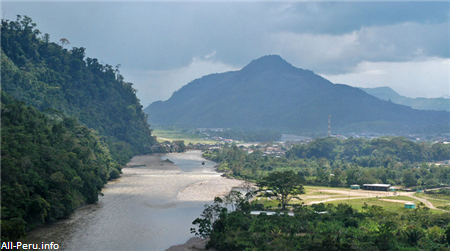
After 30 years, President Ollanta Humala announced the end of a state-of-emergency in Peru’s Upper Huallaga Valley, once the country’s top coca-growing region and home to Shining Path rebels.
“We’ve made the decision to give a pleasant surprise to the Upper Huallaga,” Humala said, according to RPP Noticias. “We are lifting the state of emergency in the Upper Huallaga after 30 years.”
The state of emergency gave the Armed Forces control over the Upper Huallaga, a mountainous, jungle basin that includes parts of the Huanuco and San Martin regions. Civil rights, including freedom of assembly and movement, were also restricted during the years of marshal law.
The Upper Huallaga in the 1970s through to the early 1990s was notorious as the world’s coca production center, with the names of areas like Tocache, Uchiza, Monzón and Campanilla conjuring up visions of a sudden flush of cash, banks opening up branches in the middle of ‘nowhere’, used cardboard boxes packed with dollars being flown into banks in Lima, while small aircraft landed and took off constantly with basic coca paste to be refined in Colombia.
The decision to lift the measure follows progress in security in the region.
Although coca production remains at around 13,000 hectares, it is now in the hands of family clans and not local ‘firms’ or the once-powerful Colombian traffickers, according to an IDL-Reporteros report in 2014. A focused effort to rout out the Shining Path rebels from the area was crucial in improving security.
In 2012, the government captured Florindo Flores, a Shining Path leader known as Comrade Artemio. Since then, a number of other Shining Path members in the region have been captured and the remnants have largely been dismantled or fled south to the region known strategially as the VRAEM, the valleys of the Apurimac, Ene and Mantaro Rivers, which is now the leading coca growing region.
Flores is currently in prison on charges of terrorism, money laundering and drug trafficking.
The Upper Huallaga Valley is still an important region for producing coca leaf, the raw material used to make cocaine. The area used to grow the crop has fallen in recent years, while increasing in other regions. However, the coca grown in the Huallaga has a much higher content of cocaine than the leaf in, for instance, the VRAEM, and therefore fewer leaves are needed to produce the same amount of cocaine.





